Review Of Fujifilm XF10
Some time ago when I started documenting life around me I felt a need for a small and simple camera that I could carry around everywhere. As nice as Leica M3 might be to use or as large Voigtländer Bessa I negatives are - it's not always practical to carry them around.
You might think that my love for analog photography and large capturing surfaces would dictate that a compact 35mm or larger camera would be right up my street - incorrect. Anything larger than 35mm is automatically too big. 35mm compact cameras whilst compact - are not actually that small. 35mm film canister is quite fat and that makes the camera fat as well. And while I love film - static ISO is not ideal for a casual, take anywhere and anytime camera. It's a great shame to say this but my needs are better served in the digital world.
Phone might be a good solution? Don't be silly. I can't take pictures with a sensor that tiny. APS-C is the smallest I can use without crying tears of sadness and shame. I don't hate smartphones...but I dislike them as photography tools for my own stupid reasons. If you're sensible and already have a smartphone - use a smartphone. If you're like me though...well then don't use a smartphone for taking pictures.
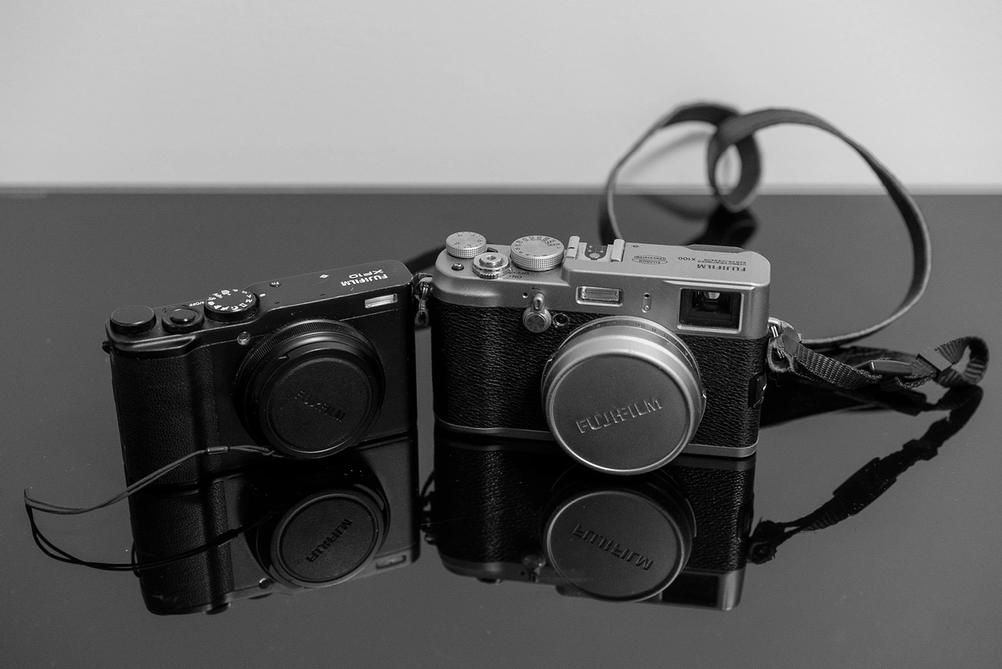
Here are some camera size comparisons for your viewing pleasure.
Fujifilm X100 is quite compact but XF10 is even more compacter. You need big pockets to fit X100 in them.
Olympus 35RC is quite a small 35mm film camera. There are certainly smaller compact 35mm cameras but it's the smallest I have.
Voigtländer Bessa I is the compact camera of 6x9 cameras. I can actually fit it in my winter jacket pockets. Other than that it's not very pocketable. Keep in mind though that the 6x9 negatives are probably bigger than XF10!
Leica M3. What can I say about it that hasn't already been said. Only that it's bigger without a lens than the whole XF10.
Samsung S8 is a phone. And in one dimension it's still bigger than XF10!
Potential Options
I didn't have many requirements. I just wanted something truly compact and not terribly expensive.
I don't remember all potential cameras that I looked at but ultimately the choice came between Ricoh GR III and Fujifilm XF10. They are both compact enough for my needs. They both have APS-C sensors. And they are both attached to 28mm lenses ( when converting to 35mm terms ).
Whilst Ricoh might be the best choice when price isn't part of consideration - Fujifilm is almost 3 times cheaper and I didn't think the results ( or even the feel of using the camera ) with Ricoh would be 3 times better. So naturally I picked Fujifilm XF10.
The Camera
Fujifilm XF10 comes in two colors. Champagne and black. Champagne one looks bad. Black one looks good.
It has a 24 megapixel APS-C CMOS sensor. It's not Fuji's X-Trans sensor. Just your regular bayer pattern sensor.
It has a 18.5mm f2.8 lens. Accepting the crop from the tiny sensor will yield you the same results that a 28mm ~f4 ( in terms of bokeh not light sensitivity ) lens would do on a full frame / 35mm camera.
It doesn't have a viewfinder - only a 3" LCD that will also accept your finger touches.
ISO goes to a whooping 51200 but realistically you can't expect to use it set that high. Nor is there often a need to.
Let's get into the review triangle of...
The Good
Build Quality
Although it's a relatively affordable camera the build quality is very nice. It feels light in the hand ( weighing in at about 280 grams ) but doesn't feel hollow or cheap. It's a light metal ( magnesium mostly ) body that doesn't squeak or rattle. The buttons and other controls have a nice and solid feel to them. Rotating knobs have a satisfying clickiness to them.
The only thing that doesn't feel as nice is the lens cover which is made from plastic. Some sort of built in cover would've been amazing but I can live with the cheaper feeling lens cover that I have to remember not to lose when I take it off.
I have been using mine for more than a year now. I carry it pretty much everywhere with me and I don't have a case. It typically gets thrown in a bag or in a pocket. It has felt the roughness of a floor stopping its acceleration. It has shared stories with keys in my pocket. And still everything feels solid. It has some scratches but nothing major.
A small update whilst writing this review. Camera has gained ability to show me an error from time to time. The lens tries to focus for a while and then an error is displayed saying that I should restart the camera. After that it works again. It doesn't happen often...yet. I am slightly worried but not too much...yet. Keep in mind that such errors could happen I guess.

You can see some light battle scars in my example. Nothing too major but I think it adds to the looks of the camera.
Ergonomics And Ease Of Use
Whilst a small camera - it's really easy to use. It's well optimised for single hand operation.
There's a small grip in front of the camera and a small thumb grip at the back and in combination they allow you to hold the camera with confidence. Camera is designed for a wrist strap and that's also how I use it but if the strap got destroyed by some unfortunate accident - I would happily use the camera without it.
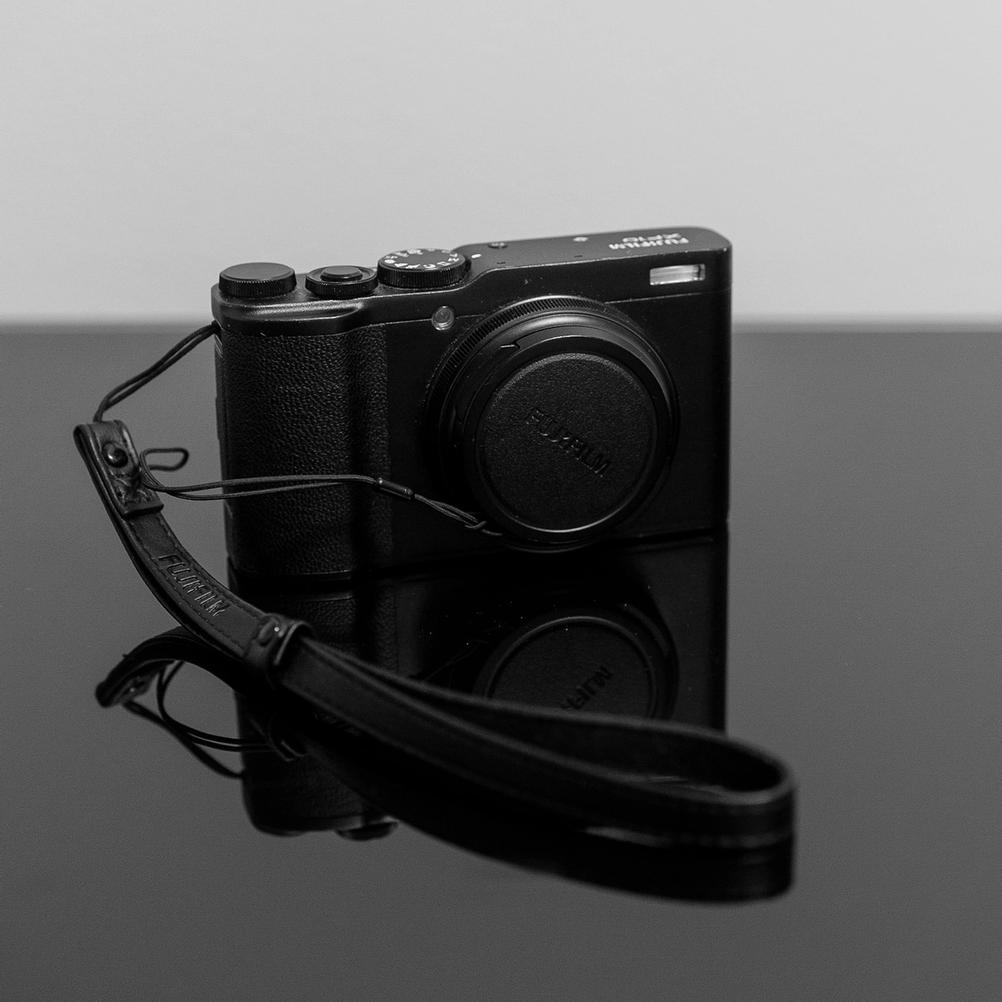
Front of XF10. You can see the grip. It's small but functions really well.
95% of the time I shoot in aperture priority with single autofocus and all controls that I need are right there next to my fingers. Rotating dial around shutter release button controls aperture. Easy to use with an index finger. The other rotating dial at the top is set to control exposure compensation and is easy to use with a thumb. That's all I need.
There's a customisable FN button at the top of the camera but it's in a slightly weird spot so it's not easy to click when handling with one hand. I have set this to the "snapshot" mode toggle where you can set the camera to a predefined focus range - more about that later. I don't use this often and when I do - it would be in a "set and use for a while" mode so it doesn't need to be constantly toggled.
There is a quick menu button which allows you to semi-quickly switch between various settings but I am very limited in my needs so have used it only a few times.
As I mentioned - LCD is a touchscreen but the menus themselves are not "touchable" - you have to use the good, old buttons for that. Touch is limited to mostly focussing or flicking between pictures.
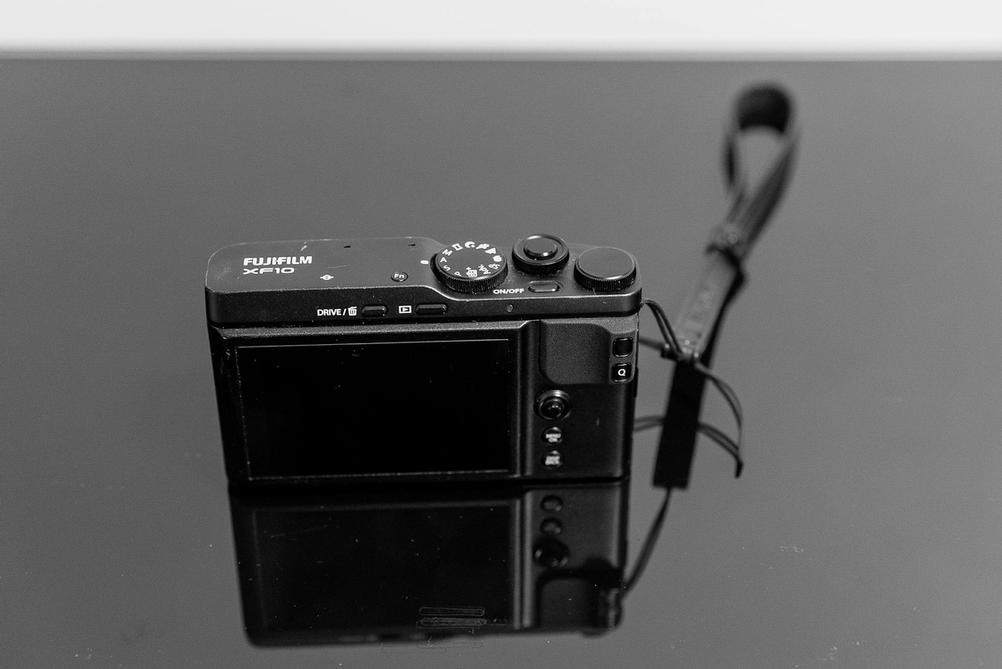
The top and back of XF10.
You can see the shutter release button and the two rotating dials on the right.
FN button is to the left of the mode wheel.
On / off switch is right there in the control cluster but doesn't feel clumsy and I have never triggered it by accident.
You can also see the LCD and surrounded controls and buttons. There's not many of them but it has just enough to not feel like you're using some mixing board or something.
Battery Life
For a "carry everywhere" camera the battery life is really good. The way I use it I have to charge it once every few months. Keep in mind that my use case might not apply to you. Although I do carry it everywhere I only tend to shoot about 10 - 30 pictures a month with it. I don't use it as a main camera when going on a photo walk so 95% of the time it lives its life turned off which the battery seems to enjoy.
Camera doesn't come with a dedicated battery charger ( at least in the EU ). Instead it comes with a USB cable that you plug into the computer or use some USB related plug. I prefer a dedicated battery charger but because I only charge it a couple of times a year - it's not a big issue.
The Average
Image Quality
I don't think there are any modern digital cameras around ( "serious" ones at least ) that actually deliver bad results. Pick any modern camera ( and by modern I mean in the last 5 or even more years ) and you can make amazing images with it.
That being said - some cameras can deliver something magical that elevates the image quality above other cameras. Most of the time these "magical" capabilities are subjective.
This camera...doesn't deliver anything magical. The results are not bad ( because it's a modern camera ) - it just doesn't have that special something that makes pictures more pleasing to me.
I shoot 100% RAW and RAW files from XF10 can be edited to everything that your heart desires. As long as it's in the 28mm field of view. Colors are nice. Maybe it doesn't have the same "pop" as Fuji's X-Trans sensored cameras but the colors are still good.
Lens is sharp. Even wide open ( if f2.8 is "wide open" ) it's plenty sharp and I have not experienced many lens artifacts ( or any that could be difficult to fix in post processing ). There's no huge vignetting. It just delivers crisp and modern results - as you would expect from a modern camera. Don't expect to get crazy shallow depth of field because 18.5mm f2.8 cameras ( 28mm f4 equivalent ) cannot physically destroy the background but you can still get some separation if you're close enough. For snapshots and documentational photography it's acceptable. I have not done any professional architectural photography so am bothered by distortions and such. Obviously if you take a really close portrait the wide angle lens will warp the head in weird ways as all wide angle lenses do.
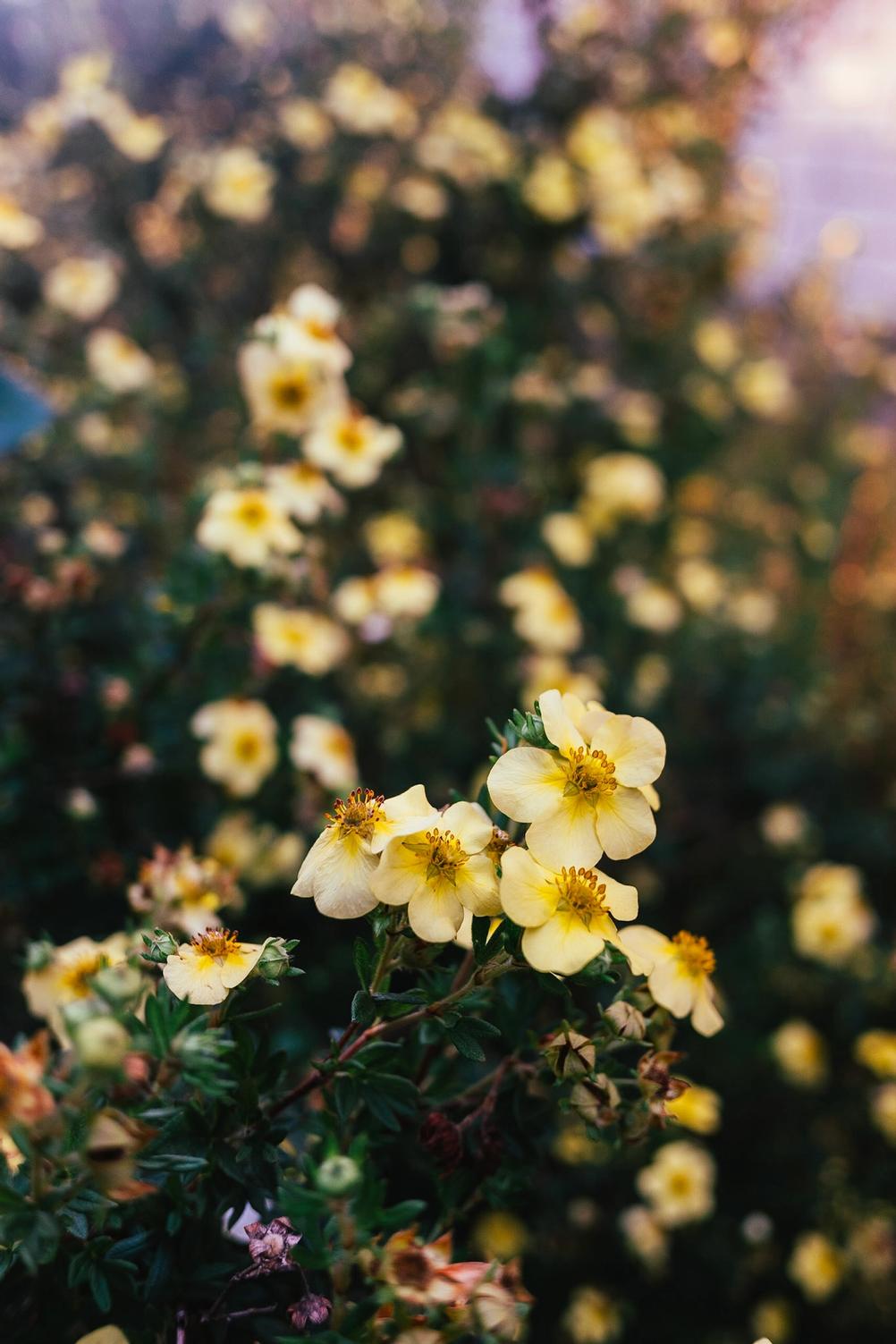
Those who want bokeh can still get bokeh. Just get close and take pictures of some flowers and be amazed by the blurified background.
High ISO performance is also highly acceptable. I typically cap my high ISO to 3200 as that typically is more than enough for me but 6400 is also usable - especially if you go black and white. It's not going to be a low light monster like Sony A7S but it doesn't need to be.
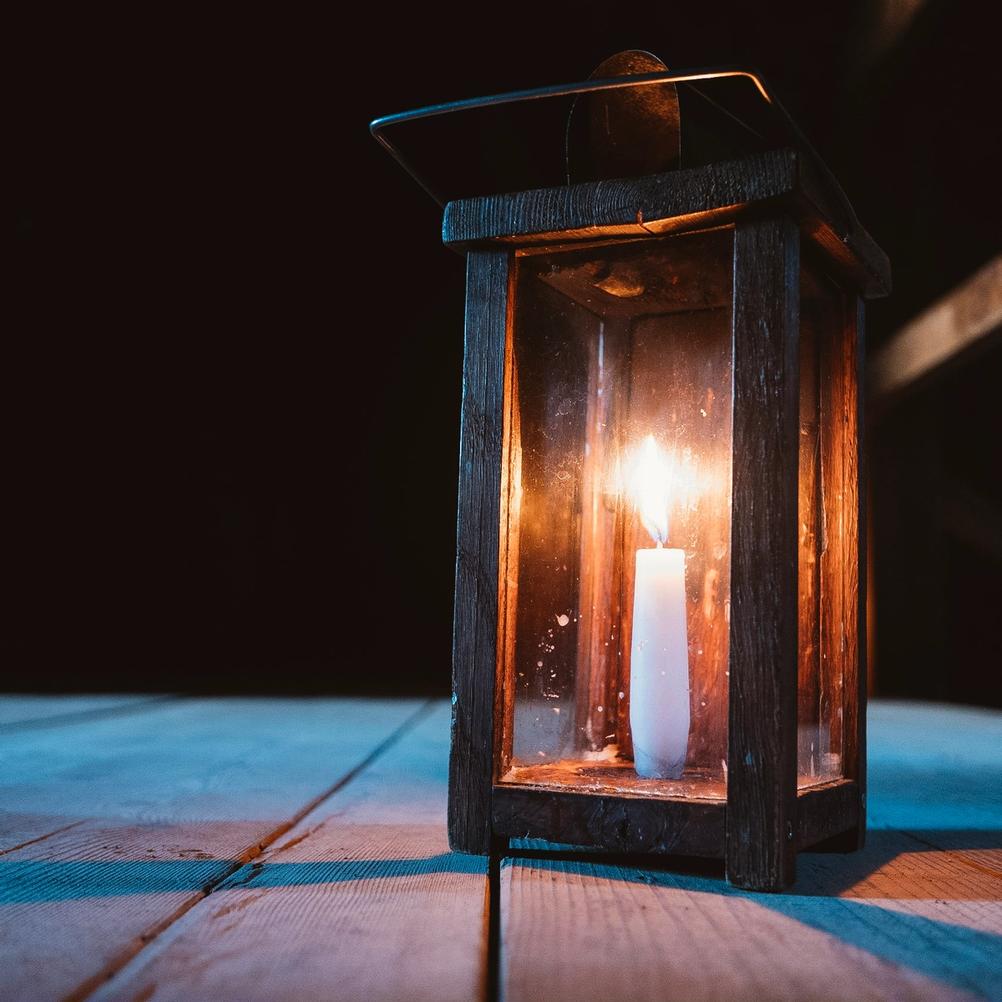
Here are some low light examples. It turns out I don't take that many pictures when I need to use high ISOs.
Part of the reason why the images don't spark magic in me is probably the lens. 18mm on APS-C isn't my favourite length. 28mm on full frame / 35mm is also not my most favourite but I would definitely prefer that. A 35mm lens would be my top choice ( which would yield ~50mm equivalent on full frame / 35mm ) but 35mm equivalent would also be acceptable. So a Fujifilm X100 lens in this compact body would be nice to have for me personally but sadly something like that doesn't exist.
This is definitely subjective and wider lenses might actually be more fitting for compact cameras but I just prefer a tighter field of view. 24 megapixels do allow some room for cropping but I'm not huge into cropping and it still wouldn't deliver the same results as a longer lens.
Autofocus
I've mostly only used single autofocus and have not played with continuous autofocus much. I don't enjoy continuous autofocus as it constantly makes sounds that annoy me ( on any camera ) and for the type of photography that I do - I don't need it.
That being said - this camera sometimes likes to switch to continuous autofocus for no reason. I would turn the camera on and it would be set to continuous. Not sure if it's a quirk with my camera or XF10 in general but it doesn't happen that often and when it does it's easy to switch it back to single autofocus mode.
Autofocus itself is acceptable but not amazing. With a wide lens the need for super precise autofocus is less needed but it's still nice to have when shooting something close. 90% of the time autofocus will work fine but sometimes it will not see the subject in front of the camera and will instead focus on infinity and beyond.
Another issue is that autofocus isn't the fastest. When the lens has already focussed somewhere close to where it should be then it's OK but when the lens needs to refocus on a longer distance then you'll have to wait a bit. You'll also have to wait longer when things get darker.
I feel like autofocus is acceptable for this type of camera.
This camera also has something called "snapshot" presets. It's basically two settings where it will set the camera to f8 aperture and focus so that everything from 2m to infinity is in focus or to f5.6 which will make 5m to infinity in focus. It's super quick in this mode as the camera doesn't need to focus. It's useful for street photography or for any circumstance where you don't want to rely on autofocus and can accept less light reaching the sensor. It's a pretty nifty feature that I have used from time to time but not too often. You could definitely achieve this using manual focus mode but having presets doing it instantly is definitely a nice touch.
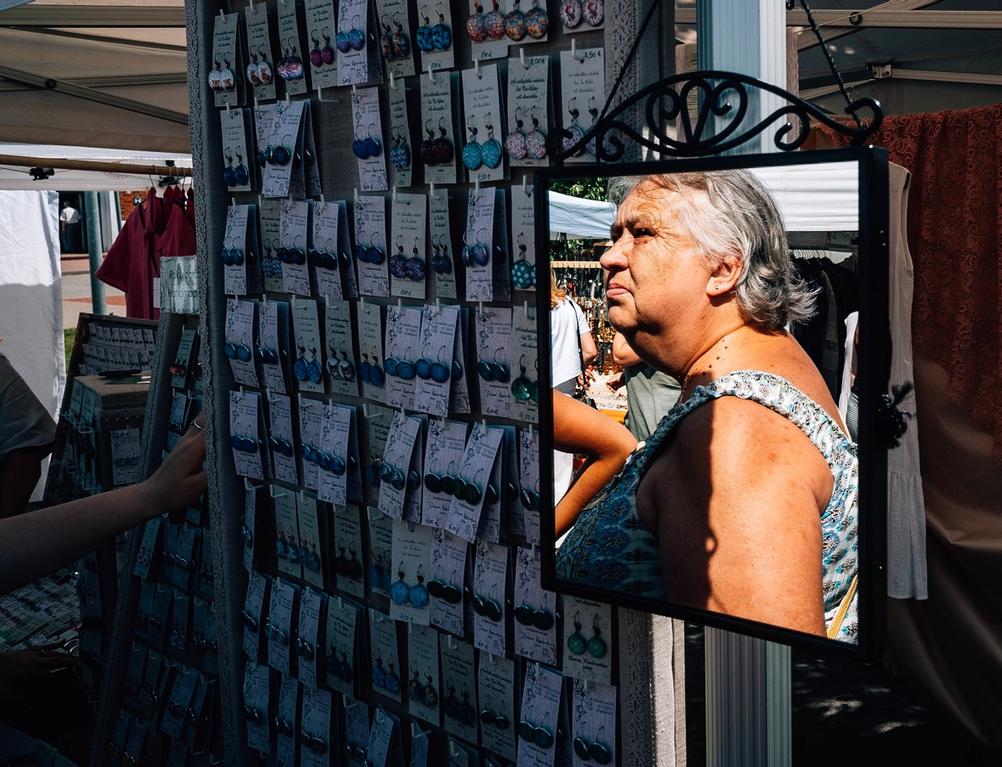
Here are some street shots taken with snapshot mode where autofocus is not engaged.
Cyclist one is an example that shows that I should learn to guess distances.
The Bad
Champagne Color Version
Just search for it and have a glance. Was it created to make eyes bleed?
Manual Focussing
I feel like it's enough to say that it's focus by wire. I have yet to have a good experience with focus by wire lenses when manually focussing. It's more obvious to me because I tend to shoot rangefinders with manual focus lenses where focussing is very precise, instant and pleasant. I don't think focus by wire will ever beat that and this camera definitely doesn't.
Manual focusing isn't something that's needed much for this type of camera but I still felt the need to mention it. Mostly to raise awareness for proper manual focusing lenses so that they are still made!
Final Verdict
Good camera - 6.5 / 10.
Might seem like a poor score but it really isn't. I'm very happy with the purchase and if you also need a camera that's small but can deliver very good results - I wouldn't recommend another camera. Ricoh might be better and I have not used it but I still doubt it's 3 times better.
I still carry it with me pretty much wherever I go - sometimes even if I have bigger / better cameras with me. I will probably not shoot with it but it's always nice that there is an option. A backup. And when there are no other cameras around - it gladly serves as the primary.
My biggest issue is really the focal length. It's too wide for my taste - especially on APS-C. 35mm or 50mm equivalent on full frame would be my preference. Also f2 or even wider would obviously be nice but it would likely compromise the compactness. And most likely would cost a ton more.
And in case you're developing a camera like this and are looking for more things to throw in just to make it my perfect, compact, daily carry - throw in a viewfinder. Even if it's purely optical. And throw away focus by wire - even if it makes things 1mm bigger.
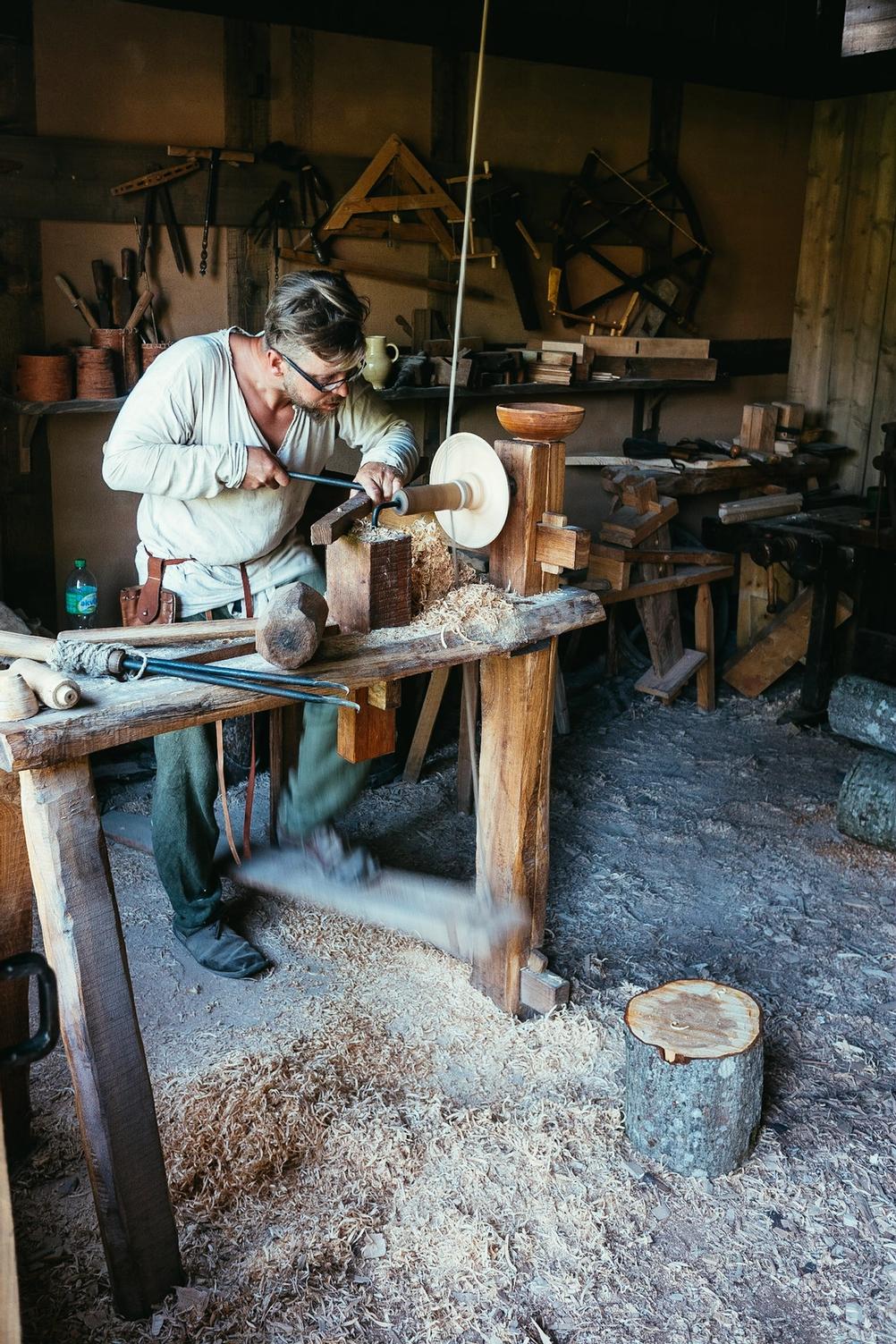
This was taken in the next few days after I got this camera. I used it as my only / main camera for a few trips.
It's quite a good camera to quietly pop into places and take a quick photo.
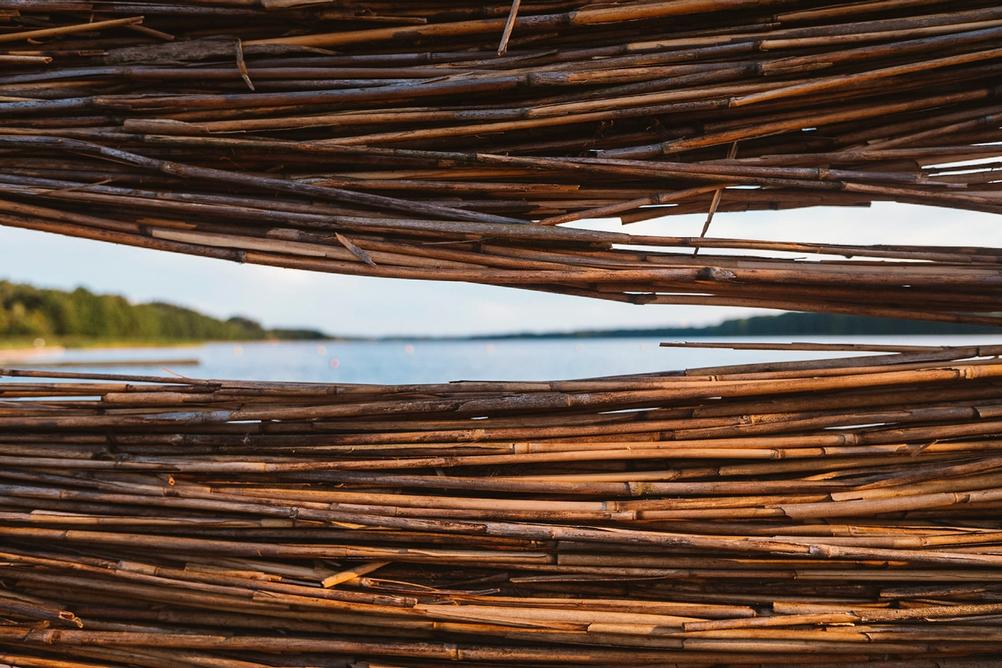
Another photo taken in the first few days after buying the camera.
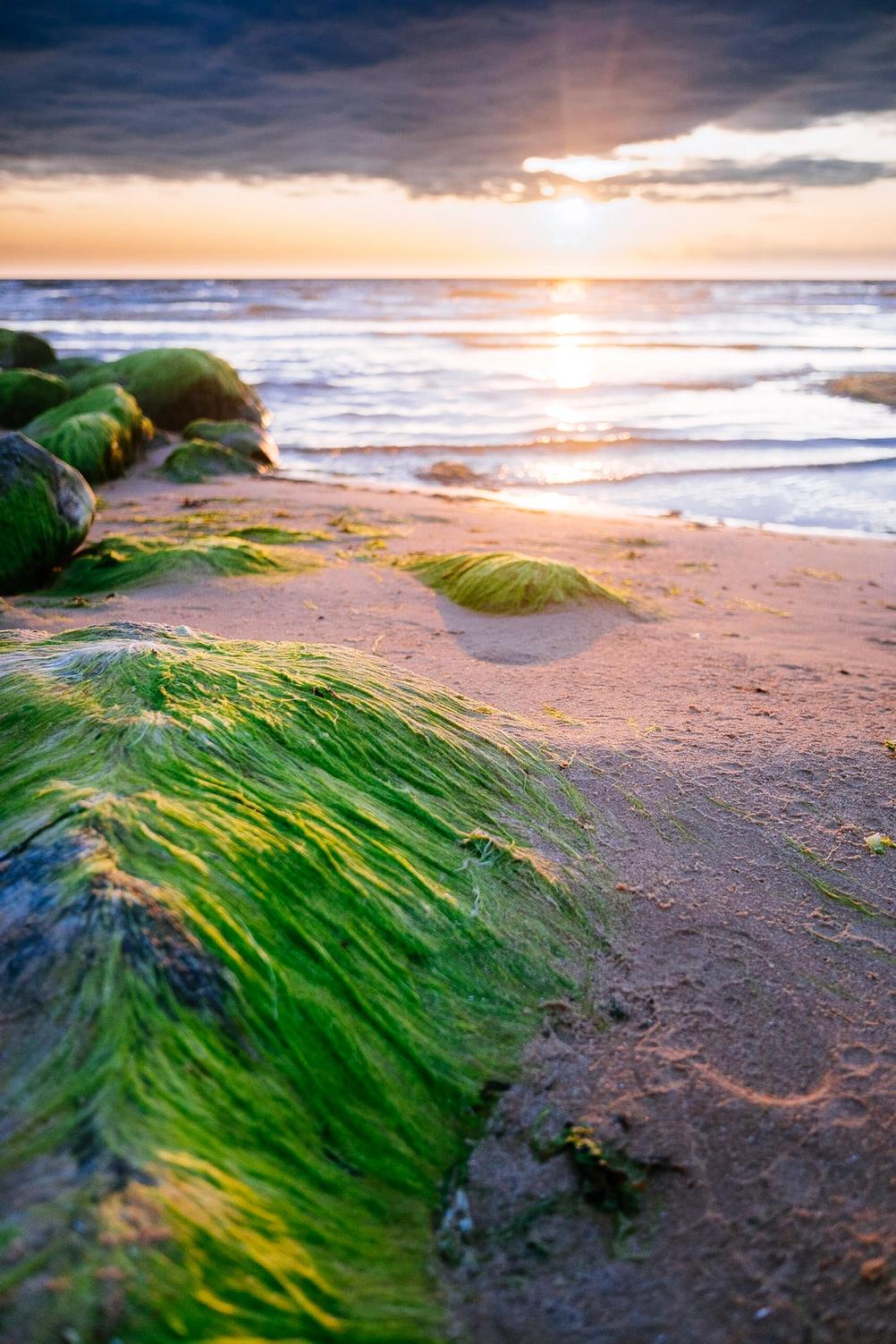
And another one. You can also use it to take some landscape-y photos. And process them heavily like this to achieve praise from all the digital bros.
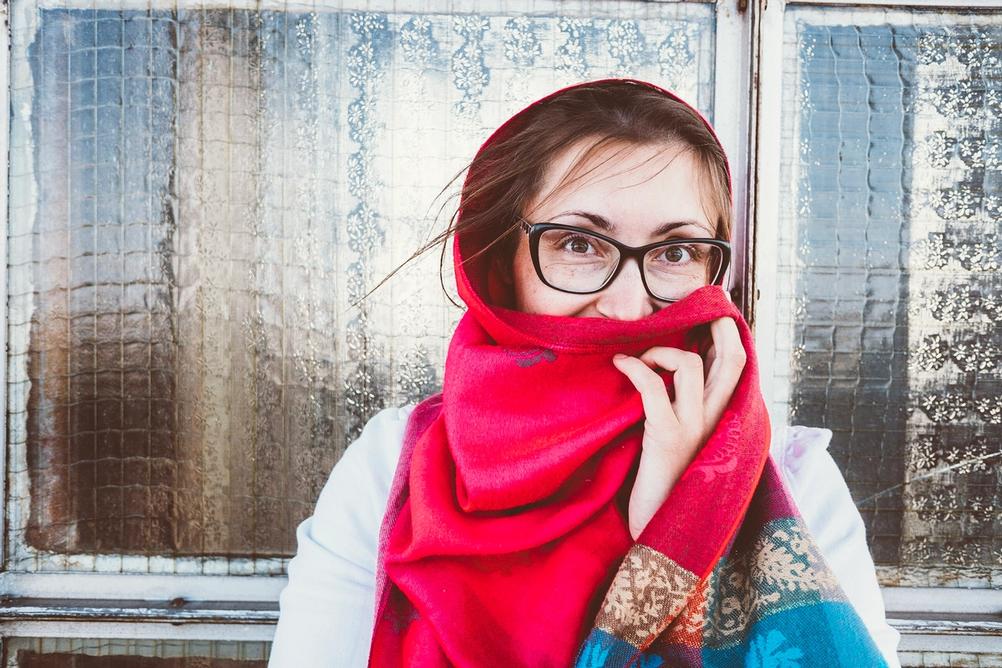
A quick portrait of my wife.
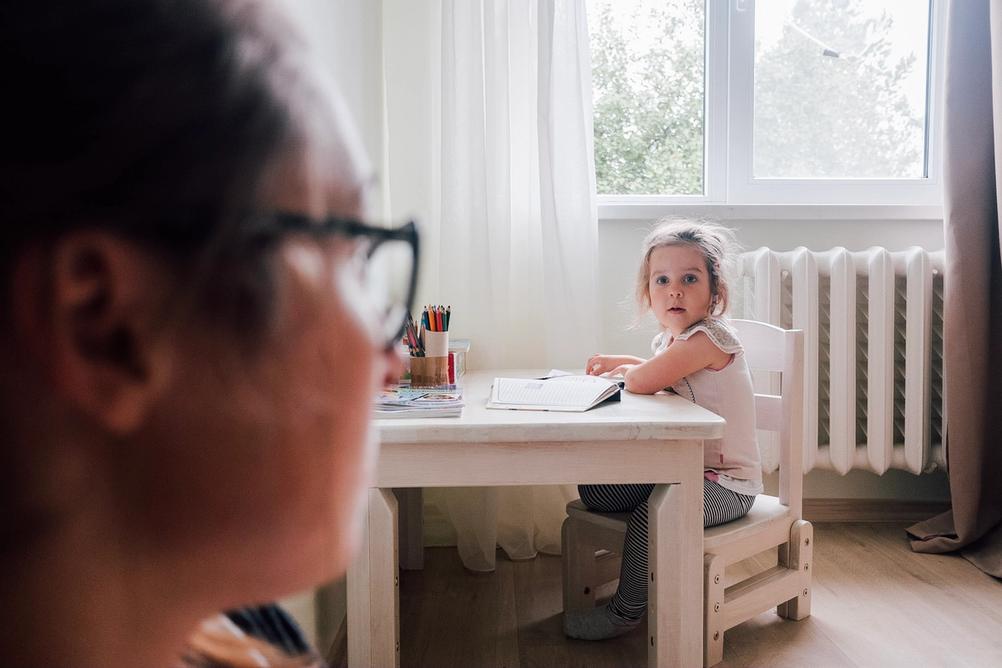
It's nice to have this camera around the house to be used as a documentary device. Capturing small moments that happen casually every day.
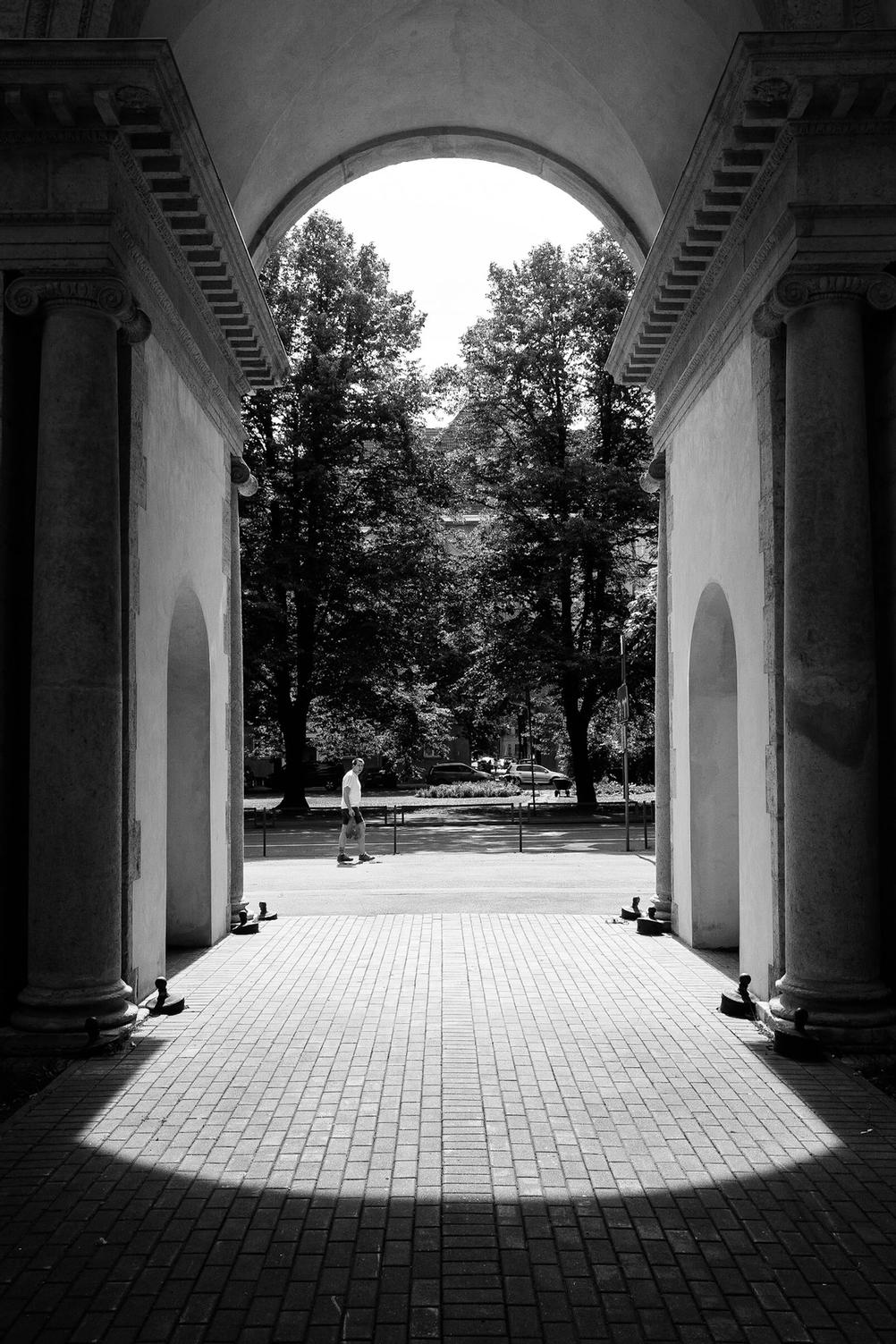
Shot when I had 15 minutes to spare whilst I was waiting for something ( don't remember what anymore ). You can create a 15 minute photo walk as long as you have a camera in your pocket!
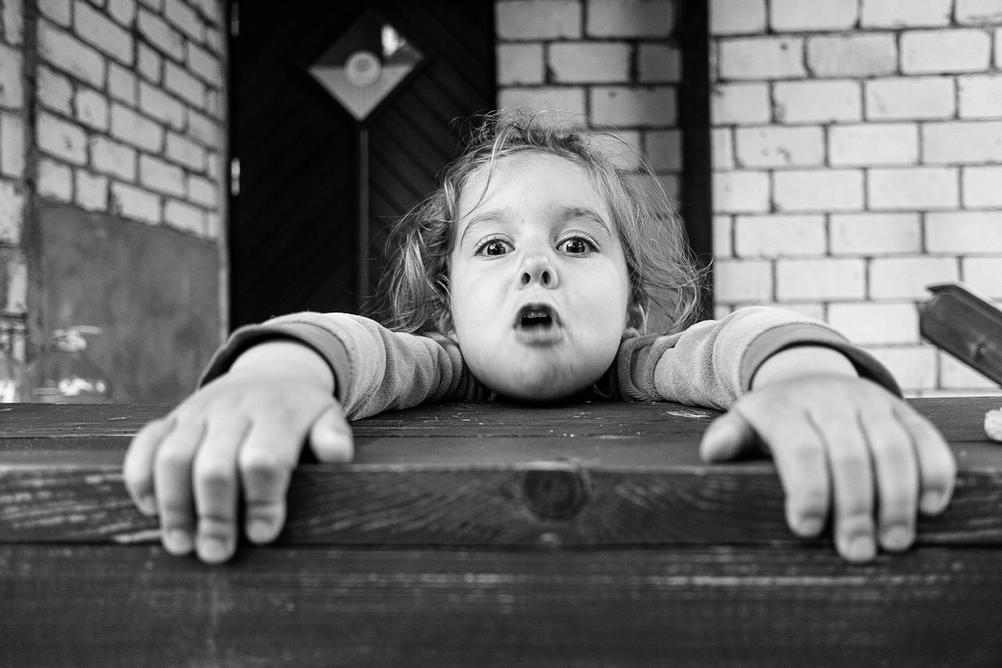
Another example of documentary photo of casual moments around our lives. This time the moment includes my daughter.
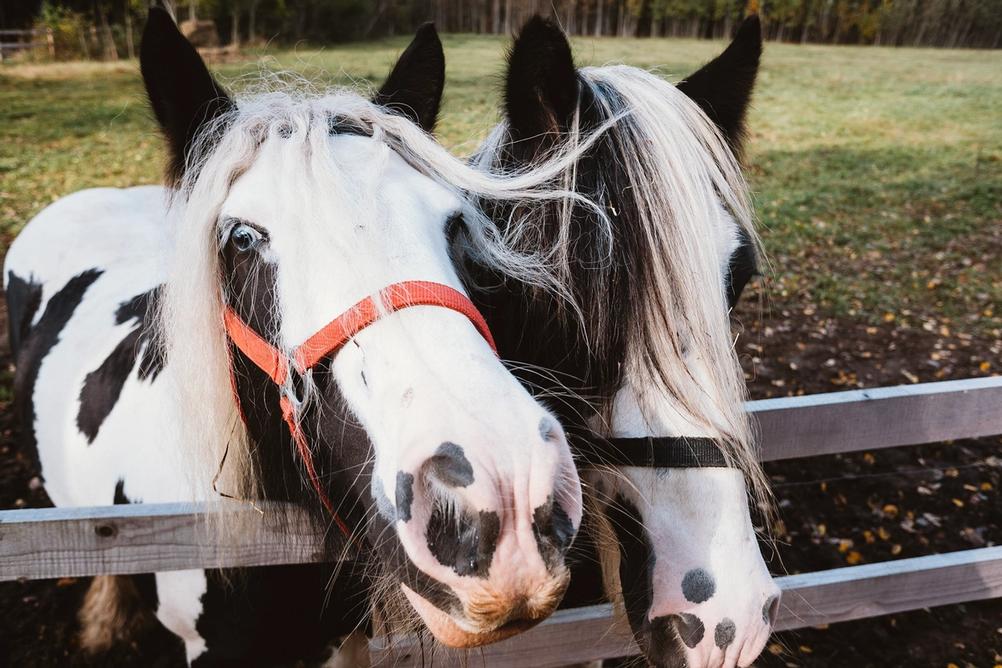
Wide angle can sometimes be useful. You can pet horses and take picture of the at the same time.
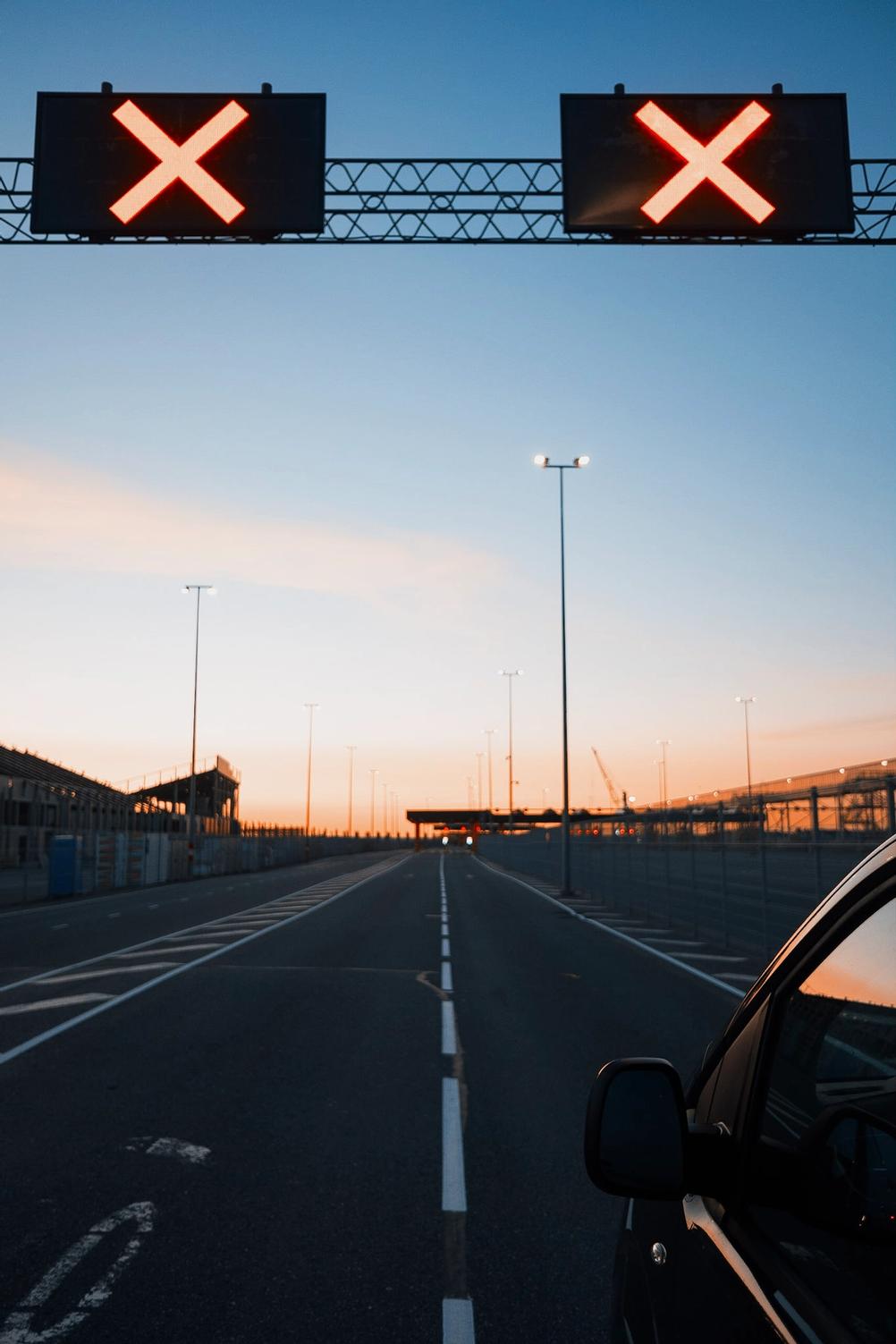
And when you're travelling with a car and spot something interesting - it's convenient to have a camera right next to you to take a photo of this "something interesting".
P.S. All photos have been edited in some way ( just color work mainly - nothing crazy or complicated ). I have the belief that photo ( especially digital ) have to be edited to achieve their full potential.
